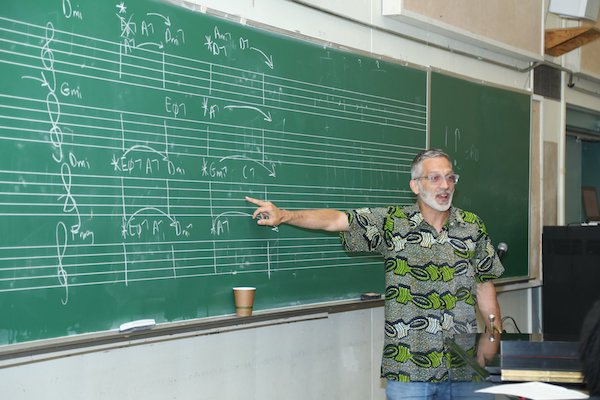As a life-long learner, Earl’s basic philosophy of teaching has evolved over the years‚ and will continue to do so. He has come to believe that teaching is more than the mere transfer of information from teacher to student. As a teacher, he aims to instill the mindset of ongoing learning in his students to assist them in reaching their full potential.
 Conceptually, Earl’s style of teaching is based upon authority, but not authoritarianism. He takes great pride in properly training the next generation in the specific skills of his craft. He treats his students as up-and-coming professionals, making his expectations known, and upholding high standards. He aims to equip his protégés with knowledge of the fundamental principles and concepts that guide their work, while modifying his teaching strategies to meet the needs of each student. Students are encouraged to identify specific, manageable goals, and then determine the necessary incremental steps required to accomplish each goal.
Conceptually, Earl’s style of teaching is based upon authority, but not authoritarianism. He takes great pride in properly training the next generation in the specific skills of his craft. He treats his students as up-and-coming professionals, making his expectations known, and upholding high standards. He aims to equip his protégés with knowledge of the fundamental principles and concepts that guide their work, while modifying his teaching strategies to meet the needs of each student. Students are encouraged to identify specific, manageable goals, and then determine the necessary incremental steps required to accomplish each goal.
As an active and current practitioner, Earl is able to bring real-world, holistic scenarios and experiences to the classroom. For example:
- Drawing student ensembles into the creative process by having them sight-read and rehearse first drafts of his new compositions and arrangements before they are presented to professional ensembles.
- Enticing famous jazz artists to come to campus, rehearse their music, and perform with his students (Rob McConnell, Jim McNeely, Rufus Reid, among others).
- Assigning jazz arranging projects using the instrumentations of the professional ensembles he leads, with the understanding that if their work is completed at a professional level, it will be performed by the ensemble.
- Organizing an annual concert series, featuring selected students with faculty members, as well as facilitating performances by student-led ensembles.
Earl’s frequent engagement in cross-disciplinary collaboration illustrates his conviction that pooling creative and fiscal resources is worthwhile and beneficial. In addition to his own collaborations with colleagues in art, drama, dance and music, he has instigated numerous projects directly involving students. Jazz arranging students wrote the music for a children’s choir CD, ensembles prepared performance pieces with dance students, and orchestral string players were united with the jazz ensemble to form a studio orchestra for which new music was commissioned. In the near future, Earl aims to broaden the scope of his collaborations, by integrating music with the liberal arts.
Earl has found that his ongoing professional development as a musician (lessons, courses, etc.) has a direct correlation to his effectiveness as a teacher. In addition to expanding his cache of skills and resources, he is reminded of the challenges and obstacles in learning, thereby making him a more insightful, patient and thoughtful teacher. Earl’s resolve to coherently explain and break down how and what he does is intensified.
Allowing his students to learn from the real-world scenarios he creates is fundamental to his teaching philosophy. Earl’s goal is to equip his students to meet their full potential. He finds fulfillment in seeing current students meeting their musical goals. It brings him joy to see his former students working successfully in a variety of musical capacities.
